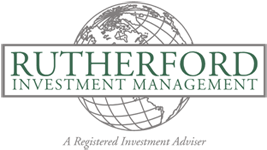Published February 11, 2022

The market had lived in fear of the Fed for some time. But when the minutes of the board’s December meeting were released, suggesting a more hawkish tone than was expected, the market bears stepped on the accelerator. The Fed minutes suggested that interest rate increases would come sooner than market pundits anticipated. The minutes also warned that the Fed was considering reduction of its balance sheet, thus shrinking the money supply and so further tightening credit. Bond yields trended higher, to the detriment of both bond and equity markets.
2022 is the Year of the Tiger, according to the Chinese zodiac. The Year of the Tiger exemplifies courage and the routing of evil. The market started the year in need of a new tiger in its tank.
That the Fed was supporting higher rates and tightening of the money supply should have been no surprise to markets, as the Fed had been telegraphing these moves for some time. Nevertheless, the reality was hard for the markets to hear. Except for energy (up 17.07 percent), all industry sectors closed the month with losses.
The economy has remained resilient; indicators are positive. The rate of economic expansion in the fourth quarter exceeded economists’ expectations, rising 6.9 percent. But that was tempered by the realization that inflation had climbed 6.5 percent.
Employers reported adding 199,000 jobs in December and 450,000 jobs in January, with the unemployment rate dropping to 3.9 percent.
Retail sales did decline 1.9 percent in December, and industrial production contracted 0.1 percent. The latter number could be partially attributed to a decline in automobile production, which in turn was partially attributed to a shortage of computer chips.
Housing starts increased in December, when interest rates were low and weather was warm. Existing home sales slipped because prices surged. New home sales increased 11.9 percent. Consumer prices rose 5 percent, with inflation 7 percent over a year ago.
Orders of durable goods declined 0.9 percent, reflecting the surge of the COVID-19 omicron variant.
The Fed left rates unchanged, although board members signaled that they will likely increase rates at the next meeting in March. They approved one last round of bond purchases, bringing quantitative easing to an end.
All indications are that the economy is strong. The outlook for the equity market is mixed but leaning positive. The Year of the Tiger may prove to be a good time to add to positions.
William Rutherford is the founder and portfolio manager of Portland-based Rutherford Investment Management. Contact him at 888-755-6546 or wrutherford@rutherfordinvestment.com. Information herein is from sources believed to be reliable, but accuracy and completeness cannot be guaranteed. Investment involves risk and may result in losses.
The opinions, beliefs and viewpoints expressed in the preceding commentary are those of the author and do not necessarily reflect the opinions, beliefs and viewpoints of the Daily Journal of Commerce or its editors. Neither the author nor the DJC guarantees the accuracy or completeness of any information published herein.
